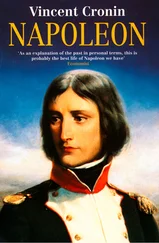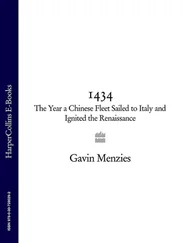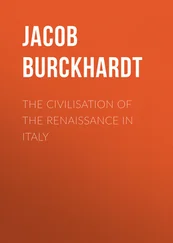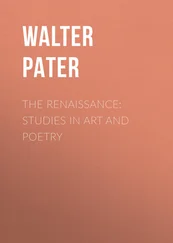1 ...6 7 8 10 11 12 ...21 In summer the air immediately under the vault was suffocating and the plaster dust irritated his skin. Watercolours dripped on to his face and even into his eyes. He worked standing, looking upwards. In a burlesque sonnet illustrated with a sketch he says that the skin on his throat became so distended it looked like a bird’s crop. The strain was such that after a day’s work he could not read a letter unless he held it above him and tilted his head backwards.
When he had finished The Flood , Michelangelo dismantled that part of the scaffolding and looked at it: from below. He saw that the figures were too small and determined to continue on a broader scale, converting the form, mass and stresses of the vault into artistic values. But would he be able to continue? ‘It has been a year since I got a penny from this Pope,’ he wrote on 27 January 1509, ‘and I don’t ask him for any, because my work isn’t going ahead well enough for me to feel I deserve it. That’s the trouble—also that painting is not my profession.’
Payments however did begin, and when Julius left on his Ferrara campaign again abruptly stopped. At the end of September 1510 Michelangelo found he had no money to buy pigments, so laying his brushes aside he rode the 250 miles to Bologna and persuaded Julius to resume payments. In October he was paid 500 ducats in Rome. But presently money again dried up, and with it his paints. Michelangelo rode a second time to Bologna, and again a hard-pressed Julius decided that the ceiling must come before everything else. In January 1511 Michelangelo had been paid and was back on his scaffolding.
When Julius returned to Rome he naturally wanted to see how work was progressing. Several times he climbed up, with Michelangelo’s strong hand supporting him on the highest ladder, to study the latest scenes, and each time he would ask, ‘When will you finish?’ Michelangelo would reply, ‘When I can.’ He had become more assured now and was painting figures in the lunettes without any cartoon. But when Julius received that answer for the third time, in autumn 1512, he exploded into one of his furies. ‘Do you want me to have you thrown off the scaffolding?’ Though he would have liked to add some touches of gold and ultramarine, Michelangelo saw that the Pope would not wait any longer. So he signed the work, but instead of putting his name he painted the Greek letters Alpha and Omega near the prophet Jeremiah, thus attributing any merit in the ceiling to God, through whose assistance it had been begun and ended. Evidently Michelangelo saw himself in Platonic terms, like the Sibyls and Prophets, as an instrument through whom God made manifest His beauty.
The scaffolding was dismantled and without even waiting for the dust to settle Julius hurried to gaze on the finished whole. The expectations of three and a half years were not disappointed. Julius liked the ceiling very much indeed, as Michelangelo wrote to his father, and ordered it to be shown to the public on 31 October 1512, the Vigil of All Saints, the feast which celebrates the human race glorified in heaven. All Rome flocked to see it, says Vasari, and one can imagine the effect on them of so vast a work, containing 343 figures, some of them as much as eighteen feet high, in its pristine colours of rose, lilac, green and grey.
At a literal level the ceiling is straightforward enough. Five scenes of Creation are followed by the Fall and Expulsion, the Sacrifice of Noah, the Flood, and Noah’s Drunkenness, that darkening of the spirit which was later to be righted when God gave the Ten Commandments to Moses: since that event was already depicted on the wall below, the ceiling dovetailed into the rest of the chapel. Below the Scenes from Genesis are twelve Prophets and Sibyls, who by their utterances look forward to the Incarnation; while in the spandrels and lunettes are the ancestors of Christ.
In depicting these events, Michelangelo makes man the hero. In the centre of the ceiling and dominating the whole is the figure of Adam. Medieval mosaicists had shown God bending over him and breathing into his body a soul, either as rays or as a little Psyche with butterfly wings, psyche being Greek for both soul and butterfly. Breaking with these and other traditions, in an image of genius Michelangelo shows God imparting life through his own and Adam’s outstretched fingers. And this Adam is an image of the God who is creating him, a perfect being unflawed by sin. His body is beautiful and unblemished. It is just such a body as Christ will assume, and which we shall have in heaven. Even after the Fall, it is the most perfect of created things. It is also the most versatile. In the rest of the ceiling Michelangelo celebrates the power and beauty of the human body in a wide variety of actions. He depicts titanic, muscular figures engaged in tasks that test them to the limit. He shows them exercising not faith, hope and charity which have not yet arrived in the world, but classical virtus , virility. They impose their will on events through bodies that drive like tornados, torrents or avalanches. Even as Prophets and Sibyls they are not passive, they strain and twist and writhe in order to glimpse the hidden mystery, then to express it. As the ancestors of Mary, they struggle to protect their children, that long stream of expectant humanity flowing from Adam to Christ.
Michelangelo’s titanic grand design is enriched by innumerable perceptive details. The Ignudi, the nude male figures who represent man in classical times, carry festoons of oak leaves and acorns, as a sign of the golden age in which they lived, and also in allusion to Julius whose family blazon was the oak tree and who was hailed by many as a restorer of the golden age. Again, the Brazen Serpent erected by Moses to heal the people of Israel harks back ironically to the serpent coiled round the Tree of Life. Classical borrowings too add to the theme of harmony between pagan and Christian thought. In the Expulsion, for example, Adam raises his hands in a gesture of defence from the chastising angel and this is a mirror image of Orestes pursued by the Furies in an antique bas-relief. These and many other details give the ceiling an incomparable imaginative richness.
When the Sistine ceiling was finished, Julius, who the previous year had suffered an almost fatal illness, began to take a renewed interest in his tomb. Michelangelo’s design called for three tiers, the lowest where Julius’s body would lie, a middle part decorated with seated figures of Moses and St Paul, and an uppermost part on which two angels would support a figure of the Pope sleeping. Julius now set Michelangelo to work on the statue of Moses, whom the Popes considered a prototype of themselves.
Michelangelo’s Moses is close to the Sistine figures both in time and spirit. He is an incarnation of man’s driving will, and since his own will was immensely powerful so must be his body. Whereas in the David Michelangelo had exaggerated the size of the head, to signify that the young warrior’s triumph had not been one of mere strength, here he exaggerates the size of the arms, boldly marking their veins and sinews. The bearded prophet holds the tablets of the Law in his muscular hands and his gaze, defiant and terrible, was perhaps suggested by Julius in anger. The two horns on his head are explained by the Vulgate’s mistranslation of a passage from Exodus : ‘his brow became horned while he spoke to God’, whereas the Hebrew has ‘radiant’. The horns were a traditional way of designating Moses in art and even in mystery plays. A last curious point is that in the beard Michelangelo has carved small portraits of Julius and himself in profile, evidently to commemorate their collaboration in the tomb.
During 1513 Michelangelo also made two statues for the lowest part of Julius’s tomb. It is uncertain what they represent. Vasari says ‘provinces subjugated by the Pope and made obedient to the Apostolic Church’; Condivi says they are two of the three arts, Painting, Sculpture and Architecture, ‘made prisoners of death with their patron, since they would never find another Pope to encourage them as he had done.’ The two youths, one resigned, the other struggling vainly to free himself, transcend any particular allegory to become symbols of human captivity and, as such, they reveal another side of Michelangelo’s character. The body he exalted in the Moses and the Sistine ceiling was also the body that held him personally captive, for Michelangelo instinctively preferred the love of men to the love of women. Theoretically man’s body was one with the cosmos, in fact it was not.
Читать дальше












